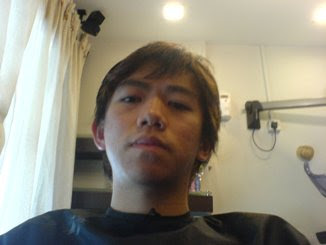By Peter Rouse
Self-Myofascial Release is utilized to aid in the release of soft tissue through the release of myofascial trigger points, myofascial adhesions and fascial restrictions.
A trigger point can be defined as a highly irritable localized spot of exquisite tenderness in a nodule in a palpable taut band of muscle tissue.
This kinaesthetic feedback helps facilitate maximum relaxation of tense tissues through autogenic inhibition.
Myofascial Release techniques utilize an individual’s body weight and/or muscular force along with various devices such as the foam roller which can be found in a variety of densities, tennis balls, hard rubber balls, golf balls (very nasty!), medicine balls, thumb pressure, pressure knobs, and a device known as “The Stick”.
The goal of SMFR stretching is to first inhibit localized tender regions by applying deep yet tolerable prolonged pressure.
The deep pressure should be held on the tender spot until tenderness is reduced by approximately 50 to 75 percent.
Once the tenderness subsides, performing slow, rhythmical movements compresses and lifts the soft tissues, aiding in the breakdown of superficial myofascial adhesions. It also increases the fluidity of movement within the soft-tissue complex.
A client’s progress can be measured by improvements in posture, decreased tenderness, increased range of motion and, more objectively, by practitioner reassessment of movement and range of motion.
Contraindications include increased pain as opposed to discomfort which subsides on tender spots within 60 seconds, dizziness or nausea. SMFR should not be performed on any area that has had recent trauma such as bruising.
The main purpose for use includes reduced joint range of motion, decreased flexibility in myofascial structures and known scar-tissue development.
A progression with the Self-Myofascial Release technique involves SMFR with Antagonist Contraction (SMFR-AC), also known as “Pinning”; this involves contraction of the antagonist through movement.
An example of this would be while in a prone position releasing the rectus femoris (Pic1); once the tenderness has reduced (neural) and soft-tissue elongation is desired (mechanical), slowly take the knee into flexion and extension while pressure is maintained on the point of restriction (Pic2).
Pic 1

Pic 2

The pressure placement of the technique remains the same as in the corrective flexibility phase with the difference of the active phase lying in the antagonist contraction.
This technique can be viewed as “pinning down” the soft-tissue restriction and actively lengthening the restricted tissue via antagonist contraction.
By performing concentric function of the antagonist musculature to the targeted area in which the pressure device is placed, the client can utilize this technique throughout many body regions, aiding in the elongation and breakdown of soft-tissue restrictions.
This technique can be performed up to 10 times holding each end range for up to 10 seconds.
Here are some basic techniques, you can also view the video on YouTube here.
Calves

ITB

Quads

Adductors

Piriformis

Lats

Thoracic

You are able to know more about Optimum Performance here.
Click here to return to "Articles"













































